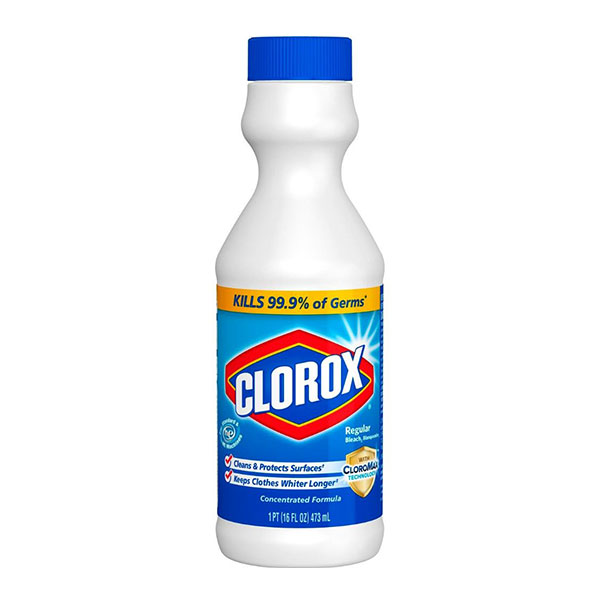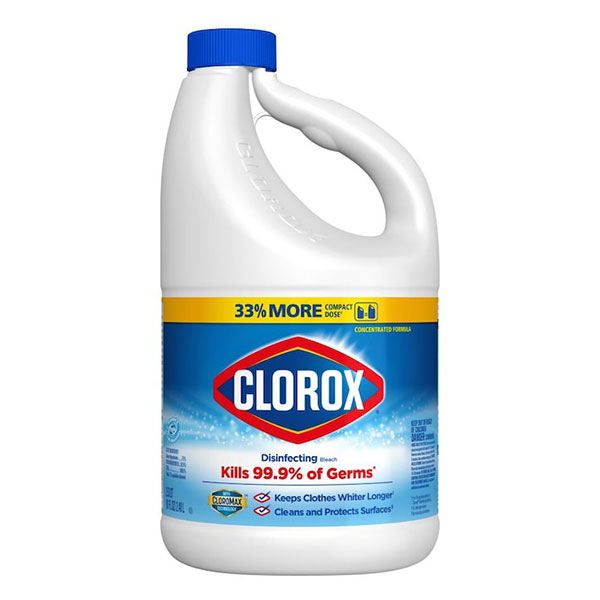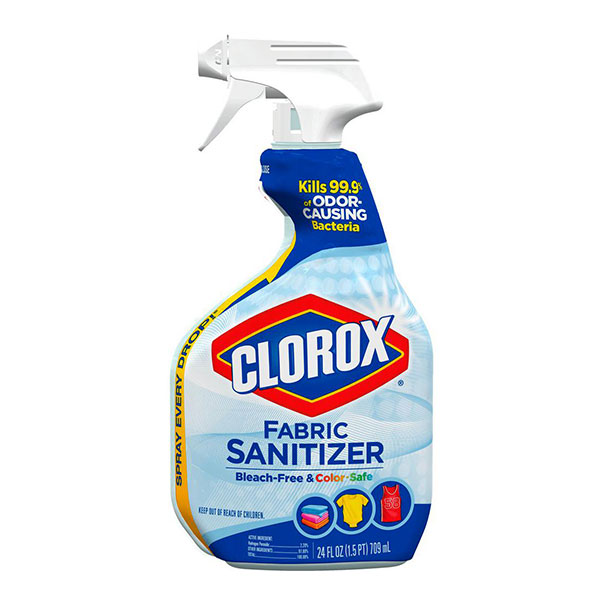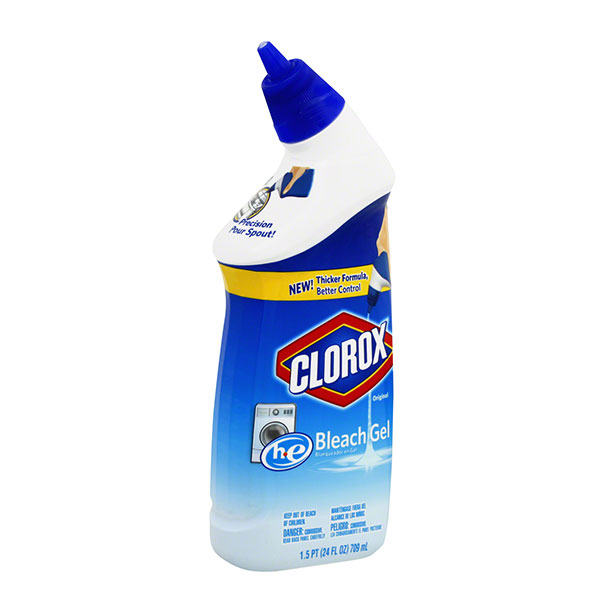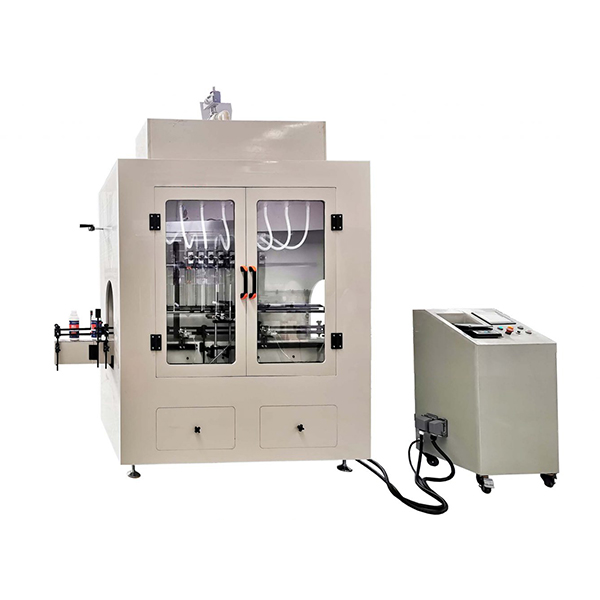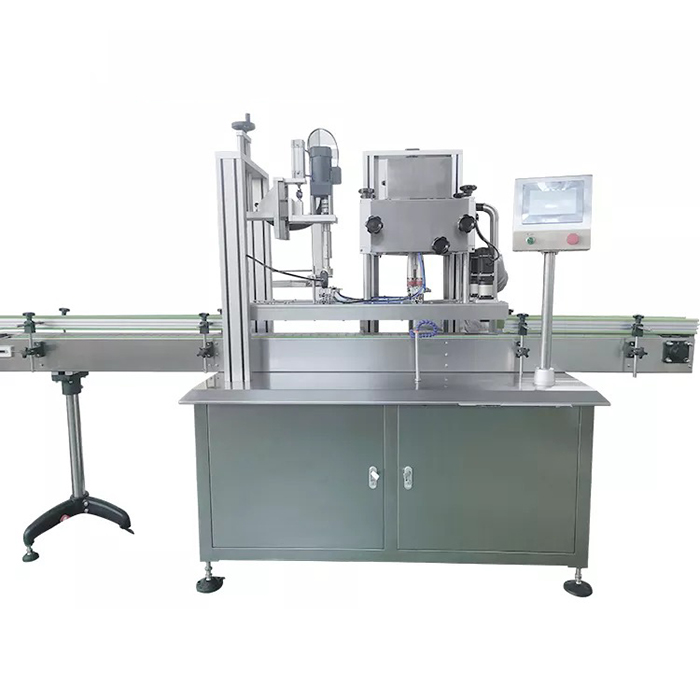
Summary
Bleach is the generic name for any chemical product that is used industrially and domestically to remove color from a fabric or fiber or to clean or to remove stains in a process called bleaching. It often refers, specifically, to a dilute solution of sodium hypochlorite, also called “liquid bleach”.
Bleach is an aggressive solution that is hard on filling equipment. At VKPAK, we know how to handle liquid packaging challenges, and that is why we are proud to offer our clients specific and unique bleach bottling solutions. From start to finish, you will find everything you need for a bleach bottling line here. This fast and efficient bottle packaging machine processes strong acids and bases, bleach, clorox, and other low viscous and corrosive liquids and applies anti-theft caps.
View VideoMany bleaches have broad spectrum bactericidal properties, making them useful for disinfecting and sterilizing and are used in swimming pool sanitation to control bacteria, viruses, and algae and in many places where sterile conditions are required. They are also used in many industrial processes, notably in the bleaching of wood pulp. Bleaches also have other minor uses like removing mildew, killing weeds, and increasing the longevity of cut flowers.
Bleaches work by reacting with many colored organic compounds, such as natural pigments, and turning them into colorless ones. While most bleaches are oxidizing agents, some are reducing agents.
The broad-spectrum effectiveness of most bleaches is due to their general chemical reactivity against organic compounds, rather than the selective inhibitory or toxic actions of antibiotics. They irreversibly denature or destroy many proteins, making them extremely versatile disinfectants.[From Wiki]
When working with acids, bleaches and other corrosive chemicals, the stainless steel construction will be replaced by HDPE material and contact parts. In general terms, certain corrosive chemicals will eat away at the stainless steel material normally used on filling machines. Though it may not be immediately apparent, it will become so over time. In other words, using stainless steel construction for corrosive chemicals severely shortens the life cycle of the machine. To combat against this corrosion, the stainless steel is replaced with plastic material that is less susceptible to the corrosion.
Most automatic corrosion resistant fillers will include a power height and tool free adjustments to allow for quick and easy changeover from one bottle to another. The simple adjustments will allow the automatic fillers to run a range of bottle shapes and sizes. To avoid corrosion from product spills or fumes, the corrosion resistant filling machines will usually come equipped with an HDPE conveyor as well, simply extending the working life of this part of the packaging system as well.
Considerations for Handling and Packaging Commercial Bleach
Commercially produced bleach requires careful handling and adherence to specific considerations to ensure its quality and safety. Manufacturers must address concerns related to chlorine gas, product dissipation, and packaging to safeguard bleach products before they are released into the market.
Hazards of Sodium Hypochlorite (Household Bleach)
Sodium hypochlorite, the active ingredient in household bleach, poses significant hazards. It is corrosive and can emit toxic fumes that are harmful when inhaled. Prolonged exposure to bleach gases or direct contact with the product can lead to severe respiratory, throat, and eye complications. Due to these risks, strict regulations govern the manufacturing process of bleach, necessitating packaging companies to prioritize worker safety and product integrity.
Considerations in Manufacturing and Packaging
The ingredients used in bleach production are highly caustic and are typically manufactured in concentrated form before being diluted. The entire bleach creation process may take place within a single facility, or the ingredients may be shipped separately and combined elsewhere. Manufacturing plants then transport the final product to bottling facilities, where the bottling process occurs either on-site or off-site.
VKPAK's Corrosive Liquid Filling Machine: Ensuring Safe Containment
VKPAK's Corrosive Liquid Filling Machine is a specialized filling device suitable for bleach containment applications. This machinery boasts user-friendly operation and the ability to efficiently fill bleach containers with precise accuracy, simultaneously sealing them in one pass.
Safe Transfer and Storage of Bleach
Bleach manufacturers must also address the safe transfer of their product between facilities. It is crucial to ensure that all containers of bleach are tightly sealed to prevent the release of chlorine gas, which poses risks to workers and the environment. Additionally, prolonged exposure to air weakens the chemical composition of bleach, compromising its effectiveness as a bleaching and disinfecting agent. Warehousing facilities must be equipped with air scrubbers to eliminate any excess gas from the environment.
Transition to Plastic Packaging
Historically, bleach was packaged in steel and glass containers. However, plastic has emerged as a superior and safer option for transporting bleach, and it is now the predominant material used in packaging. Plastic containers offer enhanced durability during transit and are more resistant to damage from accidental drops.
Environmentally-Friendly Packaging Solutions
Plastic packaging providers are actively working to reduce their environmental impact by minimizing the amount of plastic used in their packaging designs. In line with this trend, bleach companies are also following suit by offering concentrated versions of bleach that require significantly less packaging compared to their more diluted counterparts. This shift toward concentration not only reduces plastic waste but also offers a more eco-friendly option for consumers.
